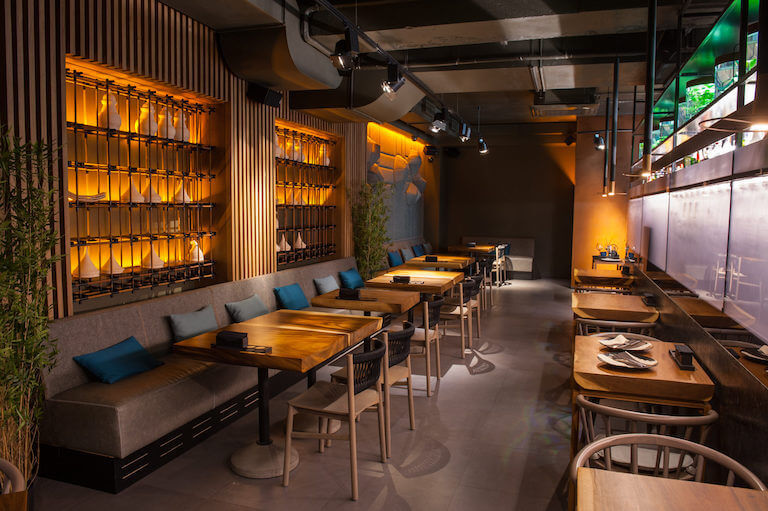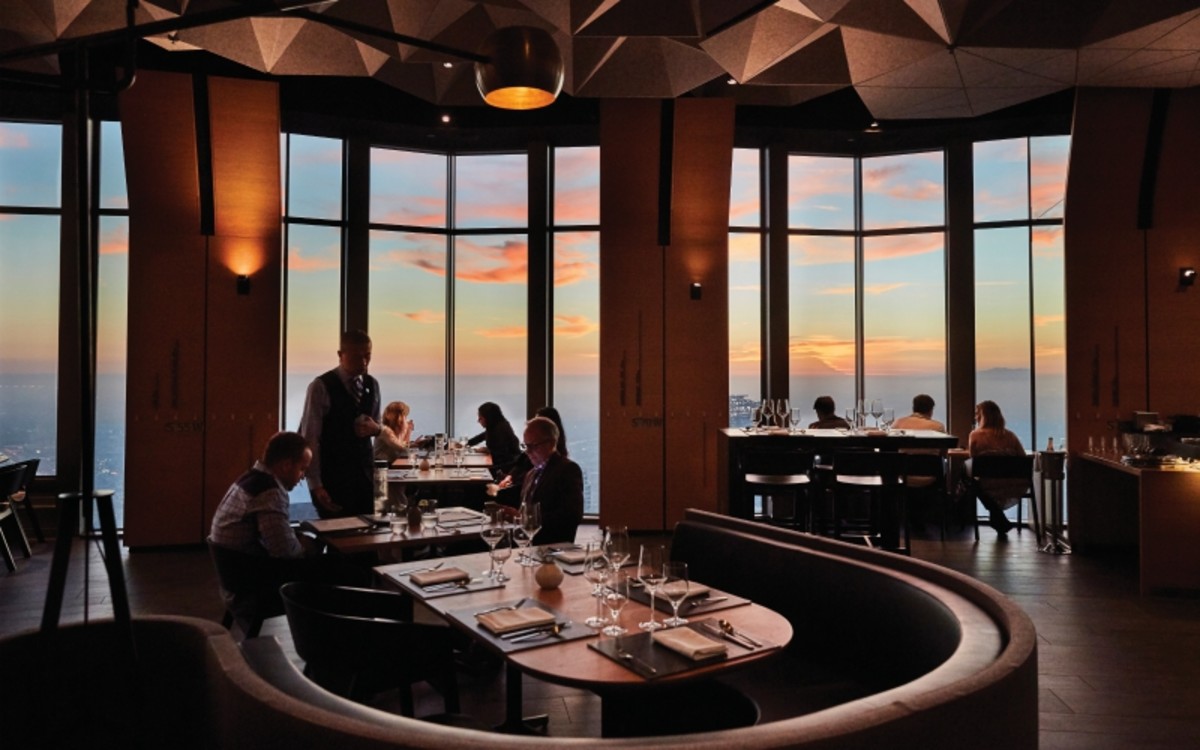Savor Authentic Oriental Food With a Pan-Asian Twist for a Culinary Adventure
Starting a culinary trip through genuine Asian cuisine, improved with a Pan-Asian twist, supplies a special chance to explore the abundant tapestry of tastes that define the area's varied cooking customs. This experience welcomes you to savor the exquisite equilibrium of preferences-- pleasant, salty, spicy, and sour-- balanced by fragrant herbs and flavors. Visualize the ingenious fusion of Thai curry and ramen or the unforeseen delight of sushi burritos. As you contemplate these luring meals, take into consideration the social stories and historic impacts that form them, each bite supplying a story waiting to be found.

Checking Out Pan-Asian Flavors
In the realm of global gastronomy, Pan-Asian food attracts attention for its exceptional variety and the unified interplay of flavors from different Eastern societies. This culinary strategy commemorates the rich traditions and special components discovered throughout the continent, producing a tapestry of tastes that is both satisfying and fascinating. Key to Pan-Asian food is its ability to stabilize contrasting tastes-- sweet, salted, spicy, and sour-- while highlighting the freshness and top quality of each component.
From the umami-rich soy sauce of Japan to the intense chili peppers of Thailand, Pan-Asian cuisine uses a considerable palette of tastes. These components are commonly integrated in creative ways, improving dishes with layers of complexity. For instance, the use of fragrant natural herbs such as lemongrass and cilantro, common in Vietnamese and Thai cuisine, includes a rejuvenating illumination to meals, while the unification of coconut milk delivers a creamy, rich appearance.
The emphasis on fresh produce and aromatic flavors ensures that each meal is not only a feast for the palate yet additionally for the senses. Pan-Asian cuisine invites restaurants to begin on a cooking trip, discovering the huge and varied landscapes of Asian gastronomy with every bite.
Fusion Meals to Try
While Pan-Asian cuisine is celebrated for its typical flavors, the contemporary cooking landscape is significantly accepting fusion meals that blend these classic elements with impacts from various other areas. This innovative strategy not only honors the abundant heritage of Eastern cookeries yet likewise presents novel taste experiences that interest contemporary tastes buds.
A prime example of such a combination meal is the Korean-Mexican taco, where seasoned bulgogi beef is covered in a cozy tortilla, covered with kimchi and a hot gochujang-infused salsa. This mix weds the bold, tasty tastes of Korea with the vivid, fresh elements of Mexican food. Likewise, sushi burritos have acquired appeal, amalgamating the fragile creativity of Japanese sushi with the hearty, hand-held comfort of a burrito, often featuring fusion active ingredients like tempura shrimp and avocado with a drizzle of wasabi mayo.
An additional significant dish is Thai curry ramen, which instills the luscious, fragrant spices of Thai curry right into the comforting broth of traditional Japanese ramen, developing an unified mix that tantalizes the detects. These combination recipes expand beyond mere uniqueness; they represent a culinary discussion in between societies, urging exploration and development worldwide of Pan-Asian cuisine.
Vital Ingredients and Flavors
To genuinely value Pan-Asian food, one have to understand the vital components and seasonings that develop its foundation. This varied cooking style draws from an abundant tapestry of Eastern practices, utilizing a harmonious blend of textures and tastes. Trick ingredients include soy sauce, fish sauce, and oyster sauce, which impart a full-flavored umami depth important to Oriental recipes. Complementary to these are rice vinegar and mirin, lending a fragile acidity and sweetness.
Aromatic aspects are critical, with garlic, lemongrass, and ginger being ubiquitous across numerous Pan-Asian dishes. These ingredients supply a fragrant base that enhances the intricacy of tastes. Seasonings such as star anise, cardamom, and cinnamon introduce heat and personality, resembling influences from regions like China and India.

Cooking Methods and Tips
Grasping the art of Pan-Asian food needs knowledge with its unique food preparation methods, each Visit Your URL adding to the dynamic tapestry of tastes this cooking custom is commemorated for. Central to these approaches is the stir-fry, a rapid cooking method that protects the dietary integrity and vivid colors of components. Utilizing a wok, the stir-fry method permits for also warmth distribution, necessary for attaining the particular appearance and taste equilibrium of Pan-Asian dishes.
Another basic technique is steaming, particularly common in Chinese cuisine. This gentle approach keeps the all-natural flavors and nutrients of ingredients, making it excellent for seafood and vegetables. Dumplings, a precious staple, typically take advantage of steaming, causing soft, delicious structures.
Cooking, additionally indispensable, gives great smoky depths to recipes such as Oriental bulgogi or Japanese yakitori (best asian restaurant Islamabad). This technique commonly entails marinading components, enabling tastes to penetrate deeply prior to cooking over an open flame or warmer
Finally, grasping the art of balancing tastes-- wonderful, sour, salty, bitter, and umami-- is crucial. Properly layering these components can raise a dish from normal to phenomenal, supplying a complicated and satisfying cooking experience that symbolizes the essence of Pan-Asian food.
Eating Experiences Worldwide
Around the world, Pan-Asian cuisine offers an unequaled dining experience, commemorated for its rich tapestry of flavors and vivid presentations. This cooking phenomenon has actually transcended social limits, capturing the hearts and palates of food enthusiasts worldwide. In worldwide cities like New York, London, and Sydney, Pan-Asian restaurants offer as melting pots where cooking practices from Thailand, Japan, China, and beyond merge, giving diners with a diverse mix of dishes that highlight the area's variety.
The worldwide allure of try this out Pan-Asian food lies in its ability to provide both authenticity and innovation. Chefs skillfully wed typical ingredients such as lemongrass, soy sauce, and miso with contemporary methods, resulting in recipes that are both refreshingly new and familiar. This fusion enables restaurants to start a cooking trip that appreciates heritage while accepting modernity.
In addition, eating experiences are boosted via thoughtfully developed atmospheres that reflect the ethos of Pan-Asian looks. From minimalist Japanese-inspired interiors to vibrant Thai-themed rooms, each dining establishment uses an unique ambiance that complements the cooking offerings. Because of this, clients are not merely consuming a dish however partaking in a cultural experience, making Pan-Asian dining an absolutely international sensation.
Final Thought
The expedition of Pan-Asian cuisine offers an extensive understanding of the complex interaction of flavors and culinary practices throughout Asia. By accepting fusion meals such as Thai curry ramen and sushi burritos, the cooking journey not only highlights the adaptability of conventional active ingredients but additionally showcases ingenious modern strategies. This gastronomic adventure, enhanced by crucial seasonings and cooking approaches, gives a special chance to value the multiculturalism and culinary virtuosity that define Pan-Asian food on a worldwide scale.
Beginning on a culinary journey through genuine Asian food, enhanced with a wendys copyright Pan-Asian spin, provides an one-of-a-kind chance to explore the abundant tapestry of tastes that define the area's diverse cooking traditions.In the realm of global gastronomy, Pan-Asian cuisine stands out for its remarkable diversity and the unified interplay of tastes from different Asian societies. Trick to Pan-Asian cuisine is its capability to balance contrasting tastes-- pleasant, salty, spicy, and sour-- while highlighting the freshness and high quality of each ingredient.
